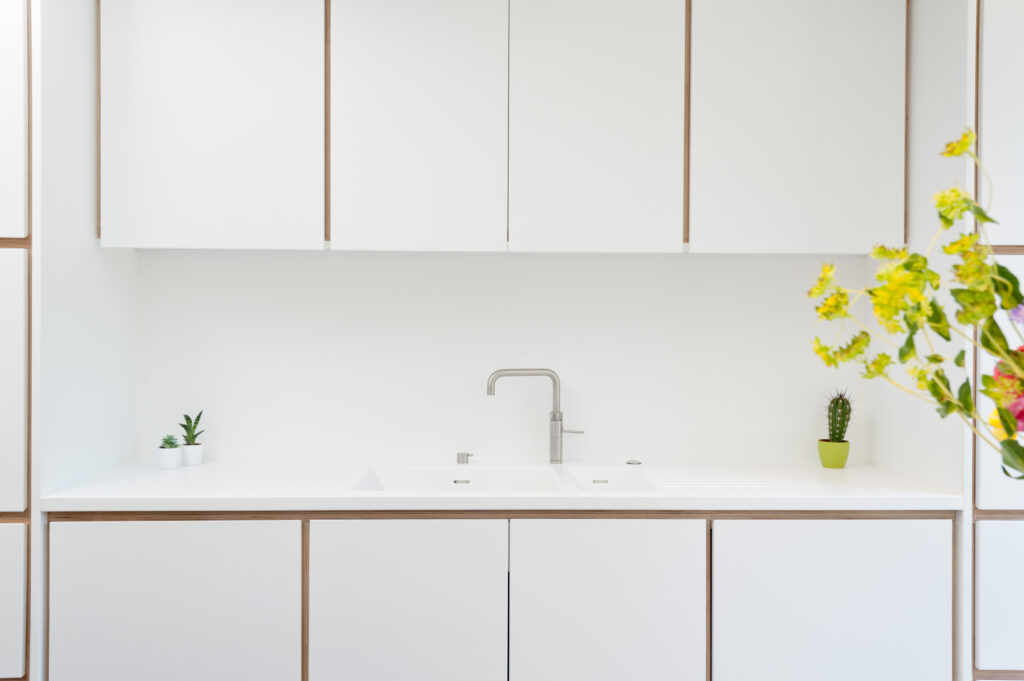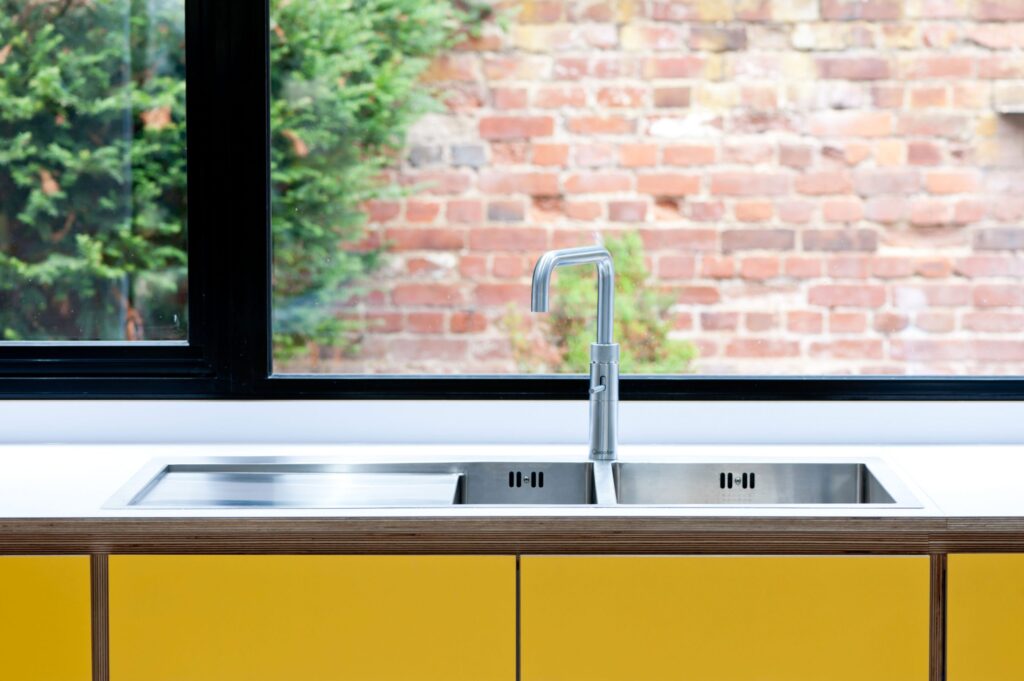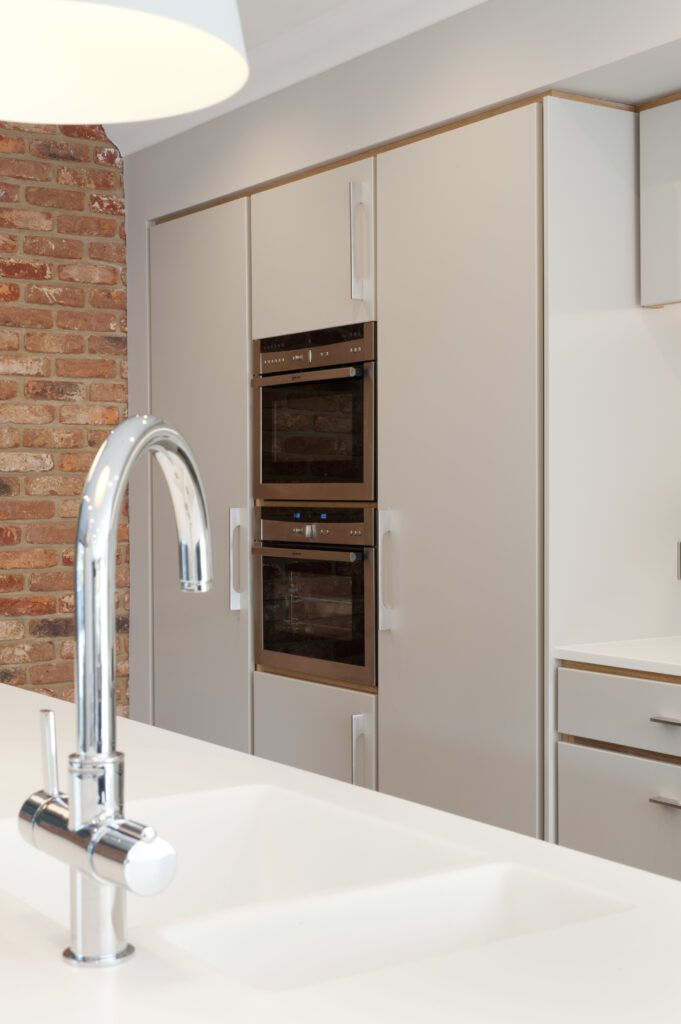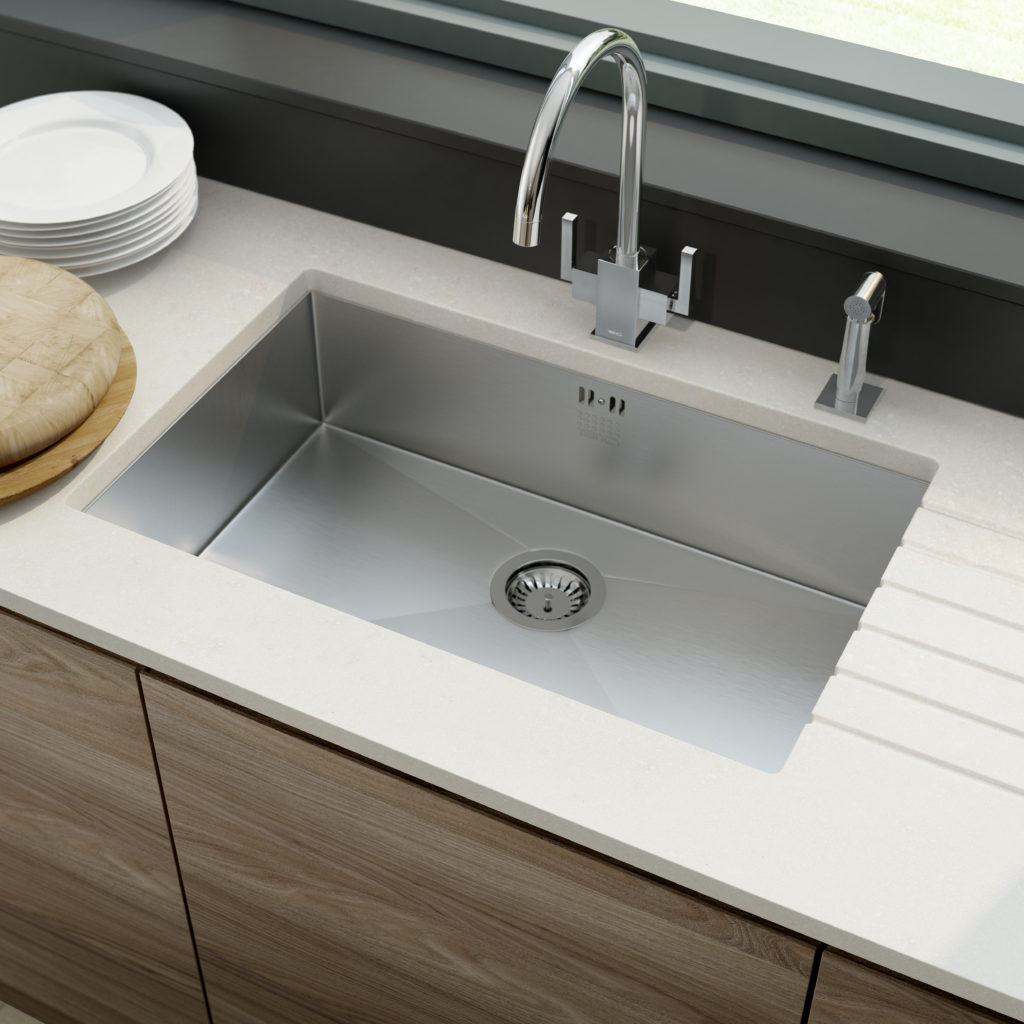Water solutions for your kitchen
Of all the elements you’ll need to think about when you’re designing a kitchen, water is arguably the most vital. Whether you’re washing up, cleaning and cooking vegetables, sterilising surfaces or simply wanting to make a cup of tea, you will need to ensure you have running water on tap whenever you need it.
But for such a simple part of the kitchen set-up there are still a surprising number of decisions to be made. That’s why we thought we’d try to clarify your options and explain some of the things you’ll need to think about.

Surely a tap is a tap is a tap
Not so.
If you haven’t visited a kitchen show room in recent times, you won’t have seen the ever-growing displays of fancy taps that do everything from boiling water to chilling it and filtering out unwanted particulates. And that’s on top of the decisions about whether you want a mixer tap or separate taps wall mounted, sink mounted or surface mounted, with integrated hoses etc., etc., etc.
We’ll leave the design aspects for now, let’s look at some of the more feature-filled options:
Boiling water taps
Boiling water taps are great for convenience. They offer instant hot water – usually 98-100 degrees depending on the model you choose – meaning you can use them to make a cup of tea, fill a saucepan or soak a greasy tray all at the turn of a handle. There are definite benefits in terms of waiting for kettles to boil and fewer gadgets cluttering up your worksurface. Boiling water taps are designed for safety too, with catches to stop children turning them on and accidentally scolding themselves.
Of course, there are downsides to all this convenience. Working like an electric shower, with a 2-5 litre tank to store the heated water, you will need to make space for a sizeable unit in your under-sink cupboard and you’ll need to budget to change the filter every 6 months or so to keep the limescale at bay and make sure your warranty is valid. That said you should find it cheaper to heat the water litre for litre than boiling a kettle, so it all balances out.

Filtered water taps
If you’re not keen on drinking water straight from your taps, water filter taps can help to remove the impurities such as chlorine and heavy metals, so it smells and tastes more appealing. This is more convenient than using, for example, a jug filter that you keep in the fridge and fill up regularly. Instead you can simply turn on the tap and receive fresh filtered drinking water. It’s also said to be more environmentally friendly than buying bottled water, reducing plastics and the wastage involved in creating bottled mineral water.
Water filtering taps tend to either have three levers, one for cold, one hot and one for filtered, or two, whereby the second lever doubles up as both cold and filtered. Alternatively it may work out cheaper to buy a separate smaller filter tap, particularly if you’re not looking for a boiling water tap option too.
Whichever you choose, if you are considering a tap with a water filter, you’ll need to make sure there’s enough space in the cupboard to fit the filtration unit.
Top Tip: Put the filter itself near the front so you won’t forget it and it’ll make it easier to replace the cartridge when necessary.

Water softeners
While technically not a ‘tap’ decision, water softener systems are popular in many areas that suffer with hard water. They can improve the useful life of water-guzzling appliances such as dishwashers, washing machines, kettles and coffee machines by reducing limescale build up. Not to mention improving the condition of hair, skin and clothes by reducing mineral deposits. They may even reduce the amount of energy required to heat water, making it cheaper too.
Evidence suggests that soft water is not good for drinking though, as it can remove elements such as magnesium and calcium that are beneficial to our bodies and introduce unwanted sodium to tap water. If you’re looking a create better tasting water, a filtration system or filter tap might be a better choice.
Top tip: If you’re installing a water softener, check whether you are allowed to use it for drinking water in your area. In some places, you can only use it for mains and must have separate drinking water.
Bonus tips
From experience it is best to invest in more expensive taps, as the cheaper ones do tend to fail quite quickly. You can find links to the 1810 Company and Kohler, who we recommend for sinks and taps, on the we recommend page of our website.
If you’re buying a new tap of any type, keep a note of the model number, as the ceramic cartridge in it will fail after about 5 years and will need replacing. You will find it much easier to know what to get if you have model number handy.

So which type of tap do you think you’ll go for? If you can’t decide between them, it’s now possible to buy 4 in 1 taps that combine the boiling water function and filtering technology with regular hot and cold output. And you can even find chilled sparkling water taps. Complete with CO2 cartridge, these are becoming more widely available from brands such as Grohe, offering chilled still, medium or sparkling water on demand.
Imagine how much room you could save in the fridge, not to mention the reduction in plastic bottles.
As always, if you need design ideas, tips or advice, why not get in touch and we’ll do what we can to help.




